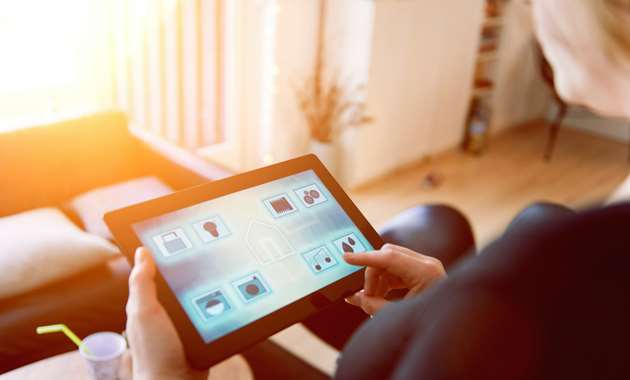Your Cart is Empty
Explore Schlage's Multi-Family Solution—Access Powered by ENGAGE™ Technology—Shop the Collection Today!
Categories
Industry
Three Things You Need to Know Before Making Your Home a Smart Home

Turning your home into a smart home is an exciting prospect, especially when you consider all of the extra convenience it can provide. Not only that, but let’s be honest – it’s just plain cool. Who wouldn’t want to have lights that turn on and off by themselves, a thermostat that operates based on your regular schedule, or a coffee maker that “wakes up” before you do to brew a fresh pot of java by the time you open your eyes? By adding a bevy of smart gadgets and appliances to your home, you can truly live a life of automated awesomeness, and boost your home’s IQ to genius levels. While transitioning your home to a smart home will definitely provide a lifestyle upgrade, it’s not a good idea to leap before you look; below are three key factors to consider before making your home a smart home.
1. Give some serious thought to wiring.
Many home automation devices are relatively simple plug-and-play operations, but there are also quite a few devices (e.g., dimmer switches, thermostats, etc.) that will need to be hard-wired into the house, which will require a little more electrical expertise. If you’re not comfortable with that level of involvement, you might be better off leaving to a professional. When it comes to wiring, you don’t want to operate based on guesswork, so seek help if you need it.
2. Two words: Power outlets.
Some smart home devices are battery-powered (e.g., keyless locks), but most are not. That means that you’re going to need plenty of places to plug these wonderful devices in, which in turn means that power outlets will need to be widely and readily available. For added convenience, you might want to consider installing power outlets in strategic yet somewhat obscure places such as kitchen cabinets, custom bookshelves, entertainment centers, or even floors. Otherwise, you’re going to have a spaghetti-like conglomeration of wires and extension cords littering the landscape of your home’s interior, which can really detract from the cool, tidy look you’re shooting for. In addition, consider investing in power outlets that feature USB ports to go full-on smart-tastic.
3. An integrated system is the best way to go.
There are dozens of different companies cranking out smart gadgets galore right now, and while these devices are no doubt intended to make life easier, assembling a hodge-podge of home automation devices from different manufacturers can turn out to be more trouble than it’s worth. Think about it: With each device comes its own nuances, communications protocols, and apps that control its functionality, and if you have to log in and out of four or five different apps just to control each smart device, you’re not going to be feeling the “convenience” vibe that everyone seems to be talking about. A much smarter way to go is to invest in an integrated home automation system such as BeHome247. Through the BeHome247 online interface, you can control every aspect of your smart home setup, from security cameras and thermostats to keyless locks and lighting. Since BeHome247 operates on the uber-popular Z-Wave protocol, it’s compatible with an extensive range of smart home products; this will save you a ton of time and hassle in terms of monitoring and adjusting each device as you see fit. That sounds a whole lot smarter than trying to build a piecemeal home automation system that requires several different apps and protocols.
Deciding to convert your home into a smart home is a significant step, so make sure that you’re thinking it through. Use the ideas outlined above to help you with your transition, so that your home automation system can provide you with the convenience and ease of use that will truly make a difference in your quality of life.
Browse by Category
© 2025 GoKeyless. All rights reserved. Privacy Policy. Terms of Use. Powered by Brandography.



 Over 5 Million Locks Sold
Over 5 Million Locks Sold Trusted Since 2003
Trusted Since 2003 Help
Help
